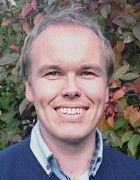
Priv.-Doz. Dr. Gregor Kieslich
Academic Career and Research Areas
Dr. Kieslich's focuses on the synthesis and structural chemistry of functional inorganic solids such as (porous) coordination polymers, inorganic-organic hybrid materials, and (molecular) solids. Based on an in-depth understanding of structure-property relationships, his research goal is the development of design principles for sustainable, inorganic functional materials. Research in Dr. Kieslich’s group is motivated by material science challenges with societal relevance, such as sustainable cooling technologies (barocalorics), alternative energy storage (mechanical energy storage) and mechanical material properties (durability), as well as sensor materials (ferroelectrics).
Dr. Kieslich studied chemistry between 2006 and 2010 at the Johannes-Gutenberg-Universität Mainz. He stayed there to complete his doctorate on the thermoelectric properties of solid-state oxide materials with nanostructures (2013). After a post-doc at the University of Cambridge (2014-2016), he moved to Munich to establish his independent career at TUM.
Awards
- Lecture award, Chemical Industry Fund (FCI) (2022)
- Research Award of the Otto Röhm Foundation (2021)
Key Publications (all publications)
G. Kieslich*. Materialdesign von Festkörpern. Nachrichten aus der Chemie 2023, 71, 74-75.
AbstractS. Burger, K. Hemmer, D. C. Mayer, P. Vervoorts, D. Daisenberger, J. K. Zaręba, G. Kieslich*. Designing Geometric Degrees of Freedom in ReO3-Type Coordination Polymers. Adv. Funct. Mater. 2022, 32, 2205343.
AbstractC. Kaußler, G. Kieslich*. crystIT: complexity and configurational entropy of crystal structures via information theory. J. Appl. Cryst. 2021, 54, 306-316.
AbstractS. Dissegna, P. Vervoorts, C. L. Hobday, T. Düren, D. Daisenberger, A. J. Smith, R. A. Fischer*, G. Kieslich*. Tuning the Mechanical Response of Metal-Organic Frameworks by Defect-Engineering. J. Am. Chem. Soc. 2018, 140, 11581-11584.
AbstractG. Kieslich*, S. Sun, A. K. Cheetham*. Solid-state principles applied to organic-inorganic perovskites: New tricks for an old dog. Chem. Sci. 2014, 5, 4712-4715.
AbstractIf you wish your profile to be changed or updated please contact TUM Talent Factory.